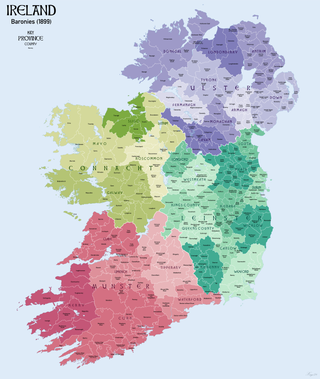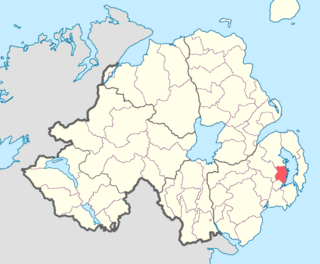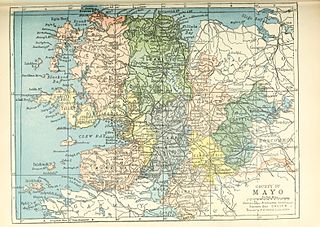The Peerage of Ireland consists of those titles of nobility created by the English monarchs in their capacity as Lord or King of Ireland, or later by monarchs of the United Kingdom of Great Britain and Ireland. It is one of the five divisions of Peerages in the United Kingdom. The creation of such titles came to an end in the 19th century. The ranks of the Irish peerage are duke, marquess, earl, viscount and baron. As of 2016, there were 135 titles in the Peerage of Ireland extant: two dukedoms, ten marquessates, 43 earldoms, 28 viscountcies, and 52 baronies. However, these titles have no official recognition in the Republic of Ireland, with Article 40.2 of the Constitution of Ireland forbidding the state conferring titles of nobility and stating that an Irish citizen may not accept titles of nobility or honour except with the prior approval of the Irish government.
Baron Lisle was a title which was created five times in the Peerage of England during the Middle Ages and Tudor period, and once in the Peerage of Ireland in the 18th century.

Fingal is a county in Ireland. It is in the province of Leinster and is part of the Eastern and Midland Region. It is one of three successor counties to County Dublin, which was disestablished for administrative purposes in 1994. Its name is derived from the medieval territory of Scandinavian foreigners that settled in the area. Fingal County Council is the local authority for the county. In 2022 the population of the county was 330,506, making it the second most populated council in Dublin and the third most populous county in the state.
Kilconnell is a small rural village in County Galway, Ireland. The village gives its name to the barony of Kilconnell, formerly held by the Lords de Freyne. In 2006 David Tye purchased the original feudal Barony of Kilconnell created in 1170 from Lord de Freyne and is the present holder. The feudal Barony of Kilconnell is registered in Ireland. There is also a peerage title, Baron Kilconnel, created in 1797, and later a subsidiary title of the Earls of Clancarty.

In Ireland, a barony is a historical subdivision of a county, analogous to the hundreds into which the counties of England were divided. Baronies were created during the Tudor reconquest of Ireland, replacing the earlier cantreds formed after the original Norman invasion. Some early baronies were later subdivided into half baronies with the same standing as full baronies.
A barony is an administrative division of a county in Scotland, Ireland, outlying parts of England and historically France and Sardinia. As a barony is associated to a Baron and a county to a Count or Earl, it has a lower rank and importance than a county.
Carbery or Carbury may refer to:
Clogher is a village in County Tyrone, Northern Ireland, seat of a cathedral, and former parliamentary borough
Iffa and Offa West is a barony in County Tipperary, Ireland. This geographical unit of land is one of 12 baronies in County Tipperary. Its chief town is Cahir. The barony lies between Clanwilliam to the north-west, Middle Third to the north-east and Iffa and Offa East to the east. The area is currently administered by Tipperary County Council. The barony is within the geographic remit of the Roman Catholic Diocese of Waterford and Lismore.

Dufferin is a historic barony in County Down, Northern Ireland. It is on the southern half of the west shore of Strangford Lough, and is bordered by three other baronies: Castlereagh Lower to the north; Castlereagh Upper to the west; and Lecale Lower to the south.

The barony of Clanmorris is a barony in County Mayo, Ireland. It is also known as Crossboyne, and was formed from the Gaelic tuath of Conmhaícne Cúile Tuiredh. It included the areas of Tir Nechtain and Tir Enna. The name Clanmorris derives from Maurice de Prendergast a Norman knight and his descendants the Fitz Maurice or McMorris family. The Baron Clanmorris title dates from 1800 when it was created for John Bingham.
The barony of Castleknock is one of the baronies of Ireland. Originally part of the Lordship of Meath, it was then constituted as part of County Dublin. Today, it is in the modern county of Fingal, Ireland. The barony was originally also a feudal title, which became one of the subsidiary titles of the Viscounts Gormanston.

In the kingdom of England, a feudal barony or barony by tenure was the highest degree of feudal land tenure, namely per baroniam, under which the land-holder owed the service of being one of the king's barons. The duties owed by and the privileges granted to feudal barons are not exactly defined, but they involved the duty of providing soldiers to the royal feudal army on demand by the king, and the privilege of attendance at the king's feudal court, the Magnum Concilium, the precursor of parliament.
Balrothery East is one of the baronies of Ireland. Originally part of the Lordship of Meath, it was then constituted as part of County Dublin. Today, it is in the modern county of Fingal.
Balrothery West is one of the baronies of Ireland. Originally part of the Lordship of Meath, it was then constituted as part of the old county of Dublin. Today, it lies in the modern county of Fingal.
HolmPatrick is a surname. Notable people with the surname include:
Nethercross is a feudal title of one of the baronies of Ireland. Originally part of the Lordship of Meath, it was then constituted as part of the County Dublin. Today, is in the modern county of Fingal.
This page is based on this
Wikipedia article Text is available under the
CC BY-SA 4.0 license; additional terms may apply.
Images, videos and audio are available under their respective licenses.




